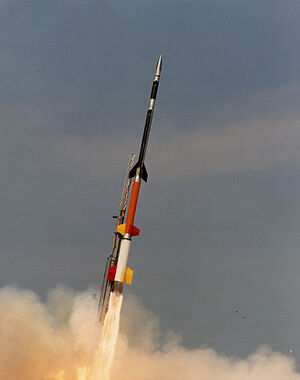Norwegian rocket incident (nonfiction)
The Norwegian rocket incident, also known as the Black Brant scare, occurred on January 25, 1995, when a team of Norwegian and American scientists launched a Black Brant XII four-stage sounding rocket from the Andøya Rocket Range off the northwestern coast of Norway.
The rocket, which carried scientific equipment to study the aurora borealis over Svalbard, flew on a high northbound trajectory, which included an air corridor that stretches from Minuteman III nuclear missile silos in North Dakota, all the way to the Russian capital city of Moscow.
During its flight, the rocket eventually reached an altitude of 1,453 kilometers (903 mi), resembling a U.S. Navy submarine-launched Trident missile. As a result, fearing a high-altitude nuclear attack that could blind Russian radar, Russian nuclear forces were put on high alert, and the nuclear weapons command suitcase was brought to Russian president Boris Yeltsin, who then had to decide whether to launch a retaliatory nuclear strike against the United States.
Soon thereafter, Russian observers were able to determine that the rocket was heading away from Russian airspace and was not a threat. The rocket fell to earth as planned, near Spitsbergen, 24 minutes after launch.
In the News
Fiction cross-reference
Nonfiction cross-reference
External links:
- Norwegian rocket incident @ Wikipedia
